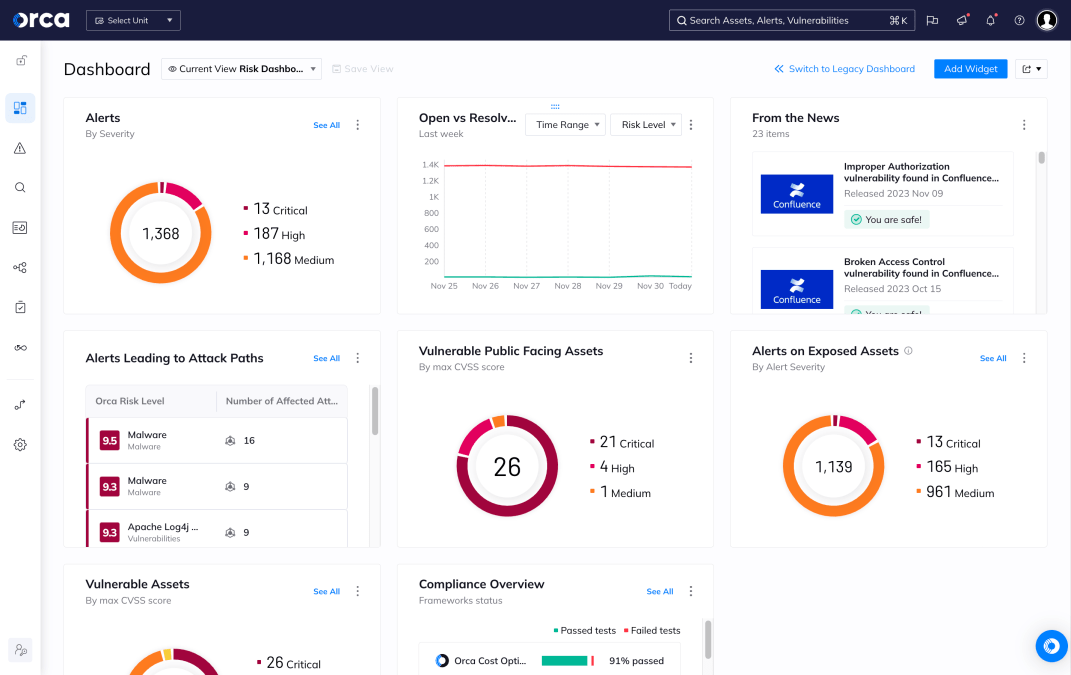Source code has become one of the most valuable and vulnerable assets organizations possess. As development teams increasingly rely on cloud-based repositories, open-source dependencies, and collaborative workflows, the attack surface for malicious actors has expanded dramatically.
According to the 2025 State of Cloud Security Report, 85% of organizations have plaintext secrets embedded in their source code repositories. When these repositories are exposed (public or breached), they give attackers a soft target for extracting secrets to access systems, exfiltrate data, or move laterally. The consequences of inadequate source code security can be devastating, both financially and operationally.
The growing threat landscape
Source code compromises have emerged as an extremely common attack vector for compromising companies. Recent statistics paint a concerning picture of the current threat landscape. The average cost of a data breach reached an all-time high in 2024 of $4.88 million, a 10% increase from 2023. More troubling, the ITRC’s mid-year 2025 report reveals 1,732 data breaches occurred in the first half of the year, marking an 11% rise from last year.
These aren’t just abstract numbers—they represent real organizations suffering real consequences. When attackers gain access to source code repositories, they don’t just steal intellectual property; they often obtain credentials, API keys, database connection strings, and other sensitive information that can lead to cascading security failures across an entire organization.
Recent high-profile examples
The threat isn’t theoretical. Two recent incidents demonstrate just how sophisticated and damaging source code attacks have become:
The s1ngularity attack
On August 26, 2025, Nx, the popular build platform with millions of weekly downloads, was compromised with credential-harvesting malware, leaking 2,349 secrets via npm packages, risking GitHub and cloud accounts. This supply chain attack was particularly insidious because it targeted a trusted development tool that many organizations rely on daily.
This attack didn’t just steal secrets—it weaponized trusted AI tools and turned developer environments into attack vectors. The attackers demonstrated remarkable sophistication by not only compromising the build system but also using the stolen credentials to create new GitHub repositories within victim accounts, effectively turning compromised environments into launching pads for further attacks.
The broader supply chain risk
The s1ngularity attack, analyzed and covered by the Orca Research Pod, exemplifies a broader trend where attackers target the software supply chain rather than individual organizations directly. By compromising widely-used development tools and packages, attackers can scale their operations to affect thousands of organizations simultaneously.
These incidents highlight a crucial reality: traditional perimeter security is insufficient when the tools we trust most become the vectors for attack.
Comprehensive solutions for source code security
Addressing these evolving threats requires a multi-layered approach that encompasses access controls, monitoring, dependency management, and organizational processes.
1. Multi-Factor Authentication (MFA) and access controls
The foundation of source code security begins with robust authentication and access controls:
- Mandatory MFA: Require multi-factor authentication for all repository access, without exception. Single-factor authentication, regardless of password complexity, is insufficient against modern attack techniques.
- Principle of Least Privilege (PoLP): Grant users only the minimum access necessary for their role. Regularly audit permissions and remove access for former team members or those who have changed roles.
- Time-bound access: Implement temporary access grants, through capabilities such as Just-in-Time (JIT) Access, for contractors or third-party developers, with automatic expiration dates.
2. Regular key rotation and secrets management
Static credentials are a ticking time bomb in any codebase:
- Automated key rotation: Implement automated rotation schedules for API keys, database credentials, and service account tokens. Tools like AWS Secrets Manager can automate this process.
- Secrets scanning: Deploy automated tools that scan repositories for accidentally committed secrets. Orca Security can catch credentials before they’re exposed.
- Environment separation: Use different credentials for development, staging, and production environments to limit blast radius if one set is compromised.
3. Source Code Management (SCM) Posture Management
Modern SCM platforms offer sophisticated security controls that many organizations underutilize:
- Branch protection rules: Enforce policies that require pull request reviews, status checks, and prevent force pushes to critical branches.
- Dependency scanning: Enable automatic vulnerability scanning for all dependencies and require remediation before merging changes.
- Commit signing: Require cryptographic signing of commits to ensure authenticity and prevent impersonation attacks.
- Repository security policies: Implement organization-wide security policies that automatically apply to new repositories.
4. Open source security assessment
Open source components often represent the largest portion of modern codebases, making their security critical:
Maintenance activity evaluation:
- Monitor the frequency of updates and patches to dependencies.
- Assess the responsiveness of maintainers to security issues.
- Consider the long-term viability and community health of projects.
License detection and enforcement:
- Gain full visibility into licenses for third-party packages to understand compliance risks and obligations.
- Enable automated policies that detect licenses for packages.
- Set guardrails that block risky builds or warn developers of non-compliant licenses.
Maintainer verification:
- Verify the identity and reputation of package maintainers.
- Look for multi-maintainer projects rather than single points of failure.
- Check for code signing and publication verification processes.
Pull request security:
- Implement automated security scanning for all pull requests.
- Require security-focused code reviews for changes affecting sensitive components.
- Use dependency update automation tools like Dependabot or Renovate, but with human oversight for critical packages.
Conclusion
The recent s1ngularity attack and countless other incidents demonstrate that source code security is not a one-time implementation but an ongoing discipline. As attackers become more sophisticated and supply chain attacks more common, organizations must adopt comprehensive, multi-layered approaches to protecting their most valuable digital assets.
The cost of prevention is invariably lower than the cost of remediation after a breach. With data breach costs reaching record highs and the frequency of attacks continuing to increase, investing in robust source code security measures is not just a technical necessity, it’s a business imperative.
Start with the fundamentals: enable MFA, implement key rotation, and assess your open source dependencies. Then build upon this foundation with advanced monitoring, comprehensive policies, and a security-conscious culture. Your source code is the crown jewel of your digital assets. Protect it accordingly.
About the Orca Cloud Security Platform
Orca offers a unified and comprehensive cloud security platform that identifies, prioritizes, and remediates security risks and compliance issues across AWS, Azure, Google Cloud, Oracle Cloud, Alibaba Cloud, and Kubernetes. The Orca Cloud Security Platform leverages Orca’s patented SideScanning™ technology to provide complete coverage and comprehensive risk detection.
Interested in discovering the benefits of the Orca Cloud Security Platform? Schedule a personalized 1:1 demo.





